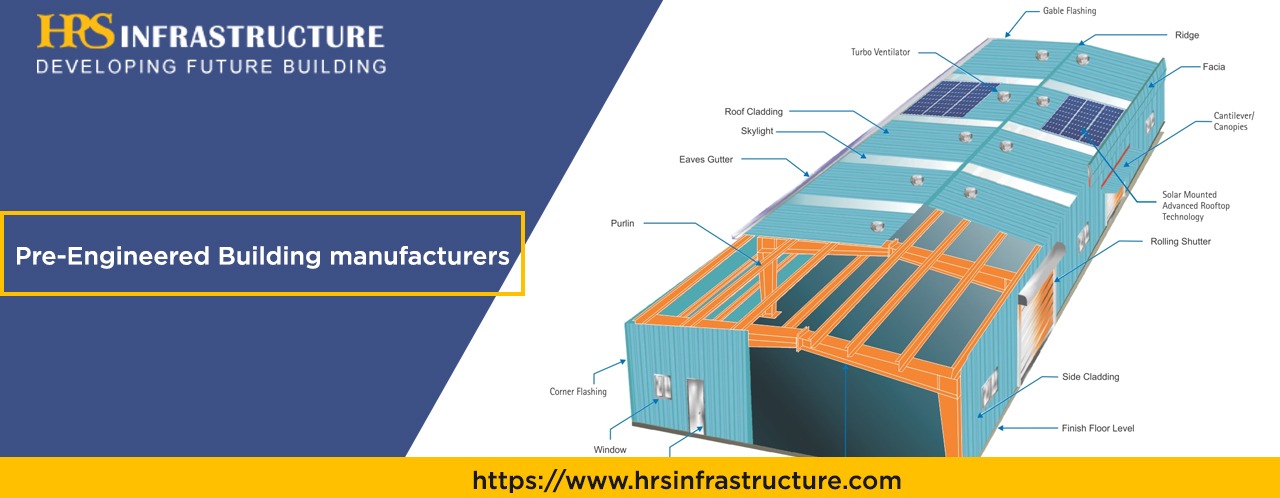Pre-engineered buildings (PEBs) is the revolutionary modern approach used by pre-engineered building manufacturers to pace the construction process. It gives scope for innovation in designing and engineering of buildings giving proper time for construction. The resulting PEB structures are strong, durable and can be designed according to the requirements of the clients, making it an ideal choice for construction. This not only reduces the labour work to a great extent but also reduces the possibility of casualties at the actual location of construction as the parts of the building are first engineered at the factory site and then assembled at the actual location of construction using nuts and bolts.
“Buildings last for millennia when people live in them.”
The statement given above is a very old saying which is blindly trusted by our ancestors, especially in countries like India and there is nothing wrong in saying that it is very true. Buildings, where people live, get timely maintenance for everything. Similarly, pre-engineered buildings require some extra efforts to extend the life of the building. The buildings need timely maintenance of its parts so they stand strong even in difficult climate conditions. A better way would be to conduct preventive maintenance rather than investing in repairs later due to unforeseen damage.
The Maintenance Period of Pre-Engineered Buildings:
PEBs can easily stand under extreme climatic conditions and survive natural disasters when they are new. But even their strong base requires a certain level of maintenance to stay strong for years.
There are numerous factors on which the frequency of maintenance of PEB depends such as
- The kind of locality it has been installed in
- The humidity level and climate conditions
- The pollution level in the area etc.
Here’s the estimated period for maintenance of PEBs:
| Location | Maintenance |
| Areas very close to the sea | Every 3 months |
| Heavily polluted industrial areas | Every 3 months |
| Medium polluted industrial areas | Every 4 months |
| Areas with high humidity | Every 4 months |
| Low pollution industrial areas | Every 6 months |
| Dry and desert regions | Every 6 months |
Measures For Proper Maintenance of Pre-engineered Buildings:
Regular Cleaning:
Open areas of the building like roof sheets as well as the narrow covered areas like gutters must be cleaned regularly to avoid setting off debris and dust which can cause collection of unwanted materials that can damage the building. Regular cleaning not only maintains the aesthetic appeal of the building but also is a preventive measure to maintain its quality. One can easily one with the cleaning process with the help of a low-pressure water hose and a suitable cleaning solution.
Replace the Fasteners:
Fasteners provide the strength to the building by holding everything strongly together in place. Even a defect in these fasteners or if left loose can allow seepage into the building causing slow corrosion. Which can ultimately lead to huge damage and destruction. If you don’t want to compromise the strength of the building, make sure you take care of the fasteners now and then or replace them immediately when they are defective or loose.
A Fresh Coat of Paint:
Just like every other smooth surface does not allow the collection of dirt on the surface, similarly, a fresh coating of paint on the walls fills all the holes or dents on the surface making it damage proof. Painting on walls also prevents its exposure to humidity and the atmosphere giving it a longer life.
Maintenance of Accessories:
Periodic and timely lubrication of hinges and locks of the doors ensure that the door stays in position and does not hang lower disturbing the flooring material. It also helps in reducing the unbearable noise made during opening and closing of doors when used for a long time. Maintenance of accessories also includes cleaning of sliding doors and windows so they maintain the constant shine on the surface and does not allow dirt to settle on the surface.
In the Nutshell:
Pre-Engineered building manufacturers ensure that the overall structure is strong and durable. However, with continuous maintenance of the building prevents significant damage in the future and also saves you from bearing huge cost of maintenance.

